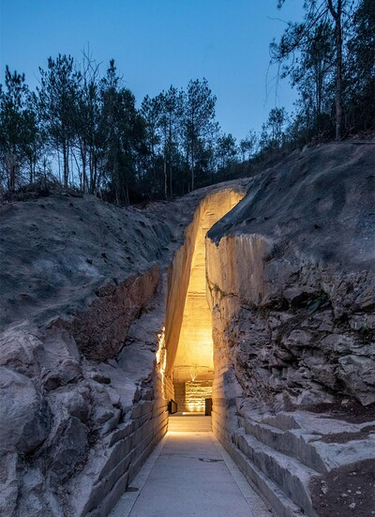According to the National Renewable Energy Laboratory, in 2022, air conditioning was responsible for the equivalent of 1.95 billion tons of carbon dioxide emissions, or 4% of global greenhouse gas emissions. HVAC systems were not popularized until the 1960s, and even later in China. Buildings have been developed in relation to their climatic surroundings for centuries; there is much architects can learn today from earlier practices that did not contribute to global warming.
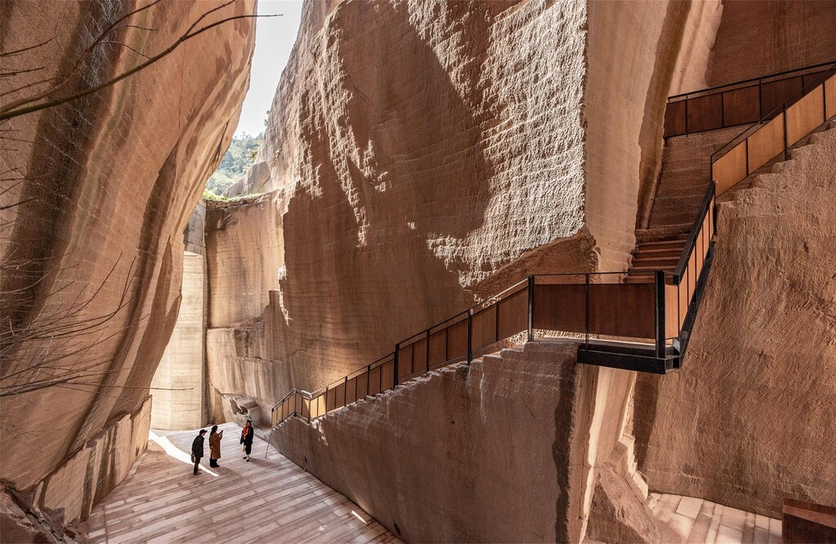 There is a new program for Jinyun Stone Quarries in China, which are smaller, more archaic quarries created by family operations that often resemble miniature valleys. This project for reinventing these stone quarries strives to improve ecological conditions while simultaneously creating social and cultural destinations for both the local population and visitors.
There is a new program for Jinyun Stone Quarries in China, which are smaller, more archaic quarries created by family operations that often resemble miniature valleys. This project for reinventing these stone quarries strives to improve ecological conditions while simultaneously creating social and cultural destinations for both the local population and visitors.
 This project was designed with minimal intervention, and intended to be a pilot for a wider revitalization scheme of the quarries in addition to ecological restoration in Jinyun. The nine initial sites embrace the histories of the area, such as quarrying, stone carving, local opera, and tea drinking. The sites chosen took the convenience of both residents and tourists into consideration, as well as their possible impact on the local economy and contribution to cultural development.
This project was designed with minimal intervention, and intended to be a pilot for a wider revitalization scheme of the quarries in addition to ecological restoration in Jinyun. The nine initial sites embrace the histories of the area, such as quarrying, stone carving, local opera, and tea drinking. The sites chosen took the convenience of both residents and tourists into consideration, as well as their possible impact on the local economy and contribution to cultural development.
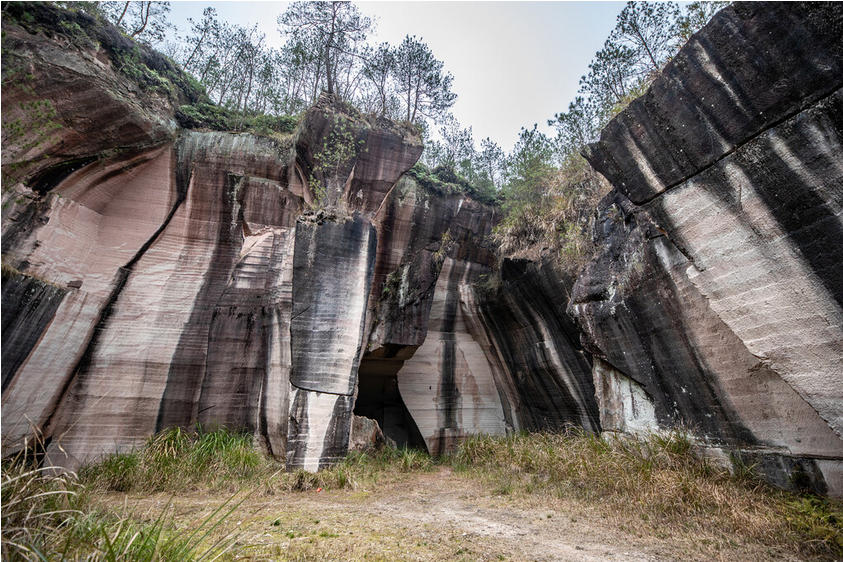 One of the basic tenets of Chinese philosophy is to consider humans and nature as one. Chinese ancestors long ago recognized the importance of mutual respect between humans and the natural environment.
One of the basic tenets of Chinese philosophy is to consider humans and nature as one. Chinese ancestors long ago recognized the importance of mutual respect between humans and the natural environment.
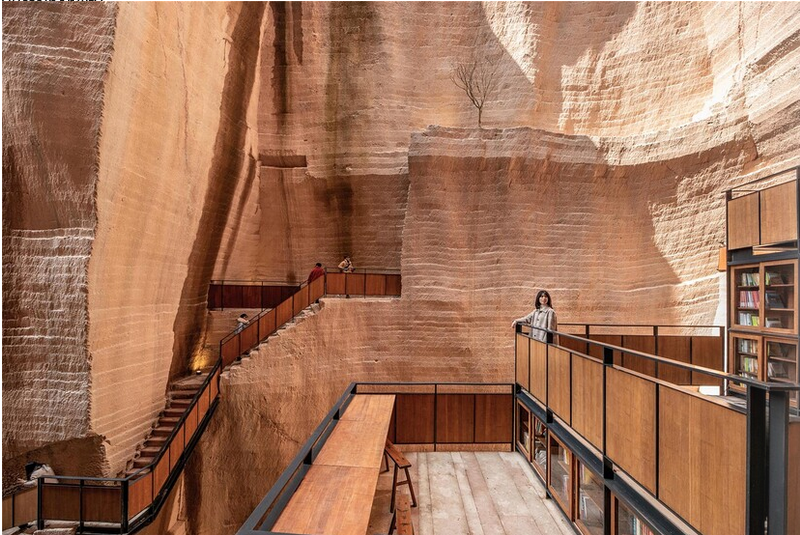 To accommodate public activities, such as a public library, opera performances, and viewing of the calligraphy sites, local materials, like steel strips for handrails and pressed bamboo for shelves and infill were sourced.
To accommodate public activities, such as a public library, opera performances, and viewing of the calligraphy sites, local materials, like steel strips for handrails and pressed bamboo for shelves and infill were sourced.
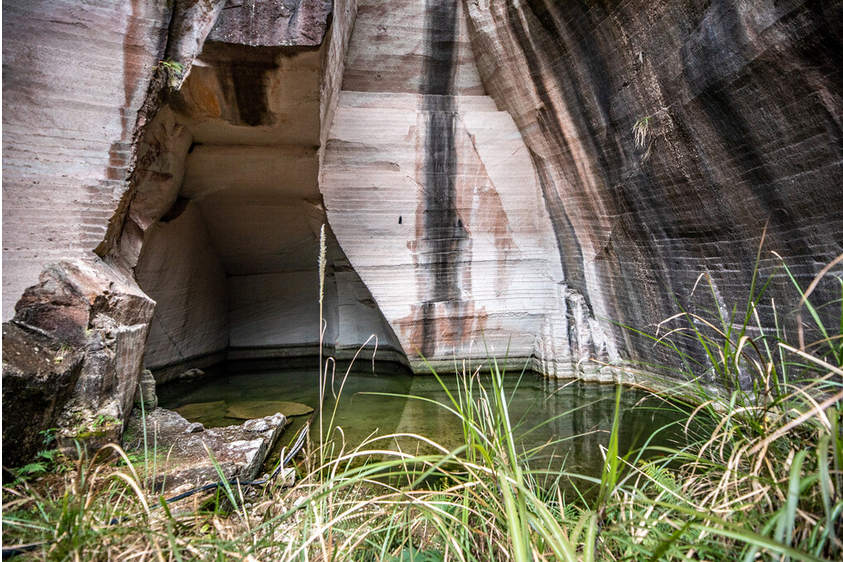 Many of the quarry sites are completely hollowed out. Their walls measure dozens of meters high at various slanted angles, which can shield visitors from blazing sun and light drizzle. These spatial conditions also create cool and airy micro-climates, which serve as an escape from the summer’s stifling subtropical humidity.
Many of the quarry sites are completely hollowed out. Their walls measure dozens of meters high at various slanted angles, which can shield visitors from blazing sun and light drizzle. These spatial conditions also create cool and airy micro-climates, which serve as an escape from the summer’s stifling subtropical humidity.
 Visitors to these sites primarily consist of local community members and visitors from the surrounding metropolitan areas. This now-defunct industry is sentimentally tied to a local sense of identity. Transforming the quarries into sites that can be visited therefore encourages a sense of belonging, physically and emotionally.
Visitors to these sites primarily consist of local community members and visitors from the surrounding metropolitan areas. This now-defunct industry is sentimentally tied to a local sense of identity. Transforming the quarries into sites that can be visited therefore encourages a sense of belonging, physically and emotionally.
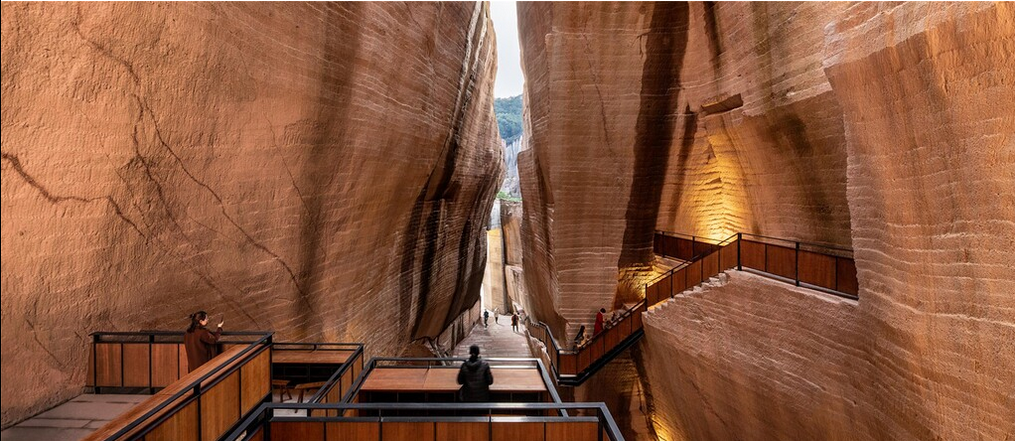 The quarries’ openness to nature is also more inviting and relatable than many other forms of cultural institutions, such as art museums. The sites allow people to visit local culture, learn about the history of quarrying, and sentimentally reconnect with nature.
The quarries’ openness to nature is also more inviting and relatable than many other forms of cultural institutions, such as art museums. The sites allow people to visit local culture, learn about the history of quarrying, and sentimentally reconnect with nature.
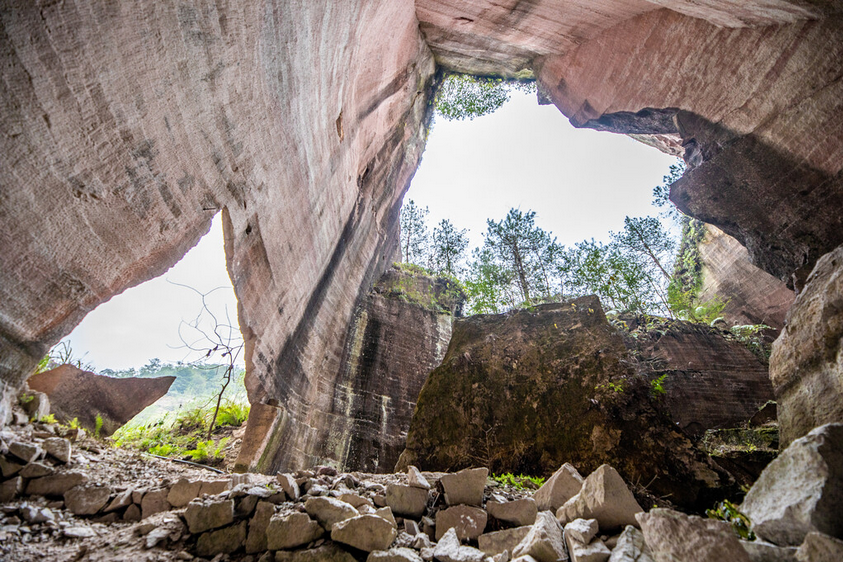 Architecture can help humans adapt to the consequences of climate change, as well as participate in minimizing the impact of human civilization on Earth. As a field, architecture must respond to the global ecological problems caused by mass construction. Architecture is not an end or a final product, but rather the means to transform and instigate change.
Architecture can help humans adapt to the consequences of climate change, as well as participate in minimizing the impact of human civilization on Earth. As a field, architecture must respond to the global ecological problems caused by mass construction. Architecture is not an end or a final product, but rather the means to transform and instigate change.
You can read the original article at www.e-flux.com

